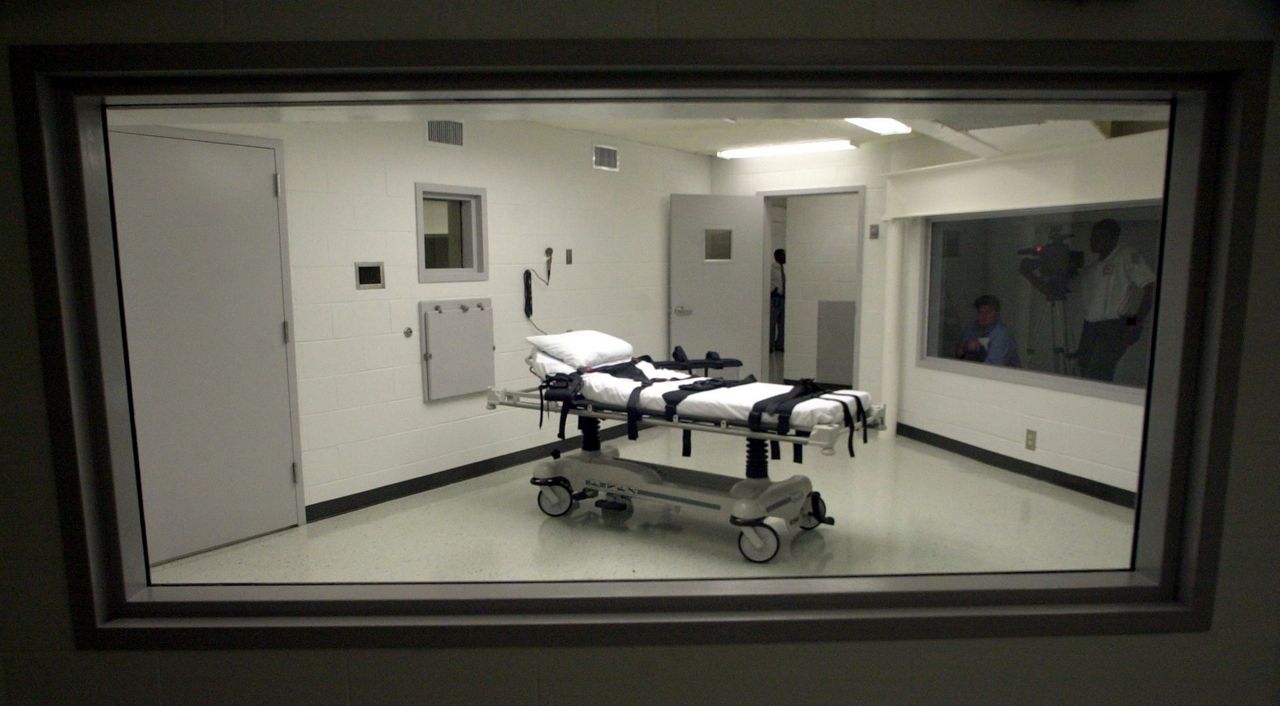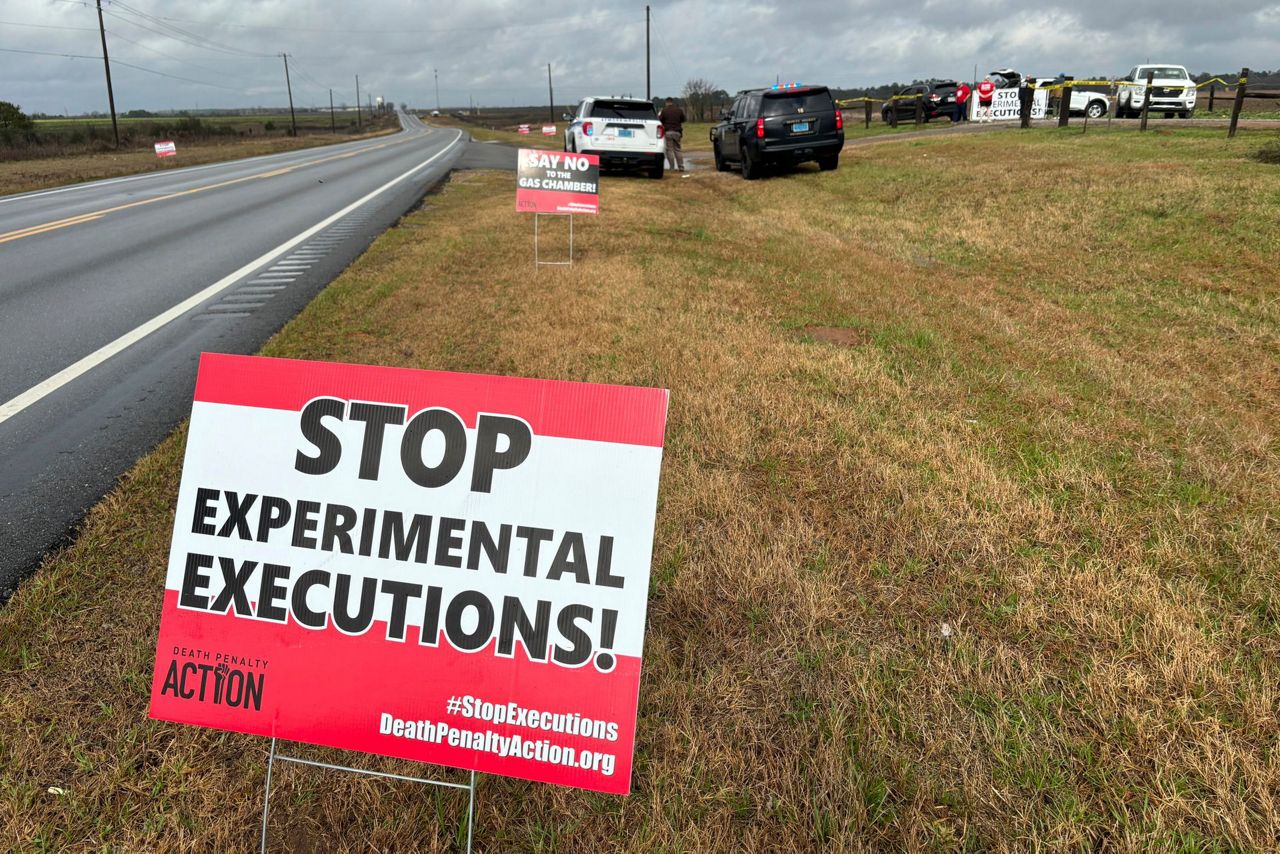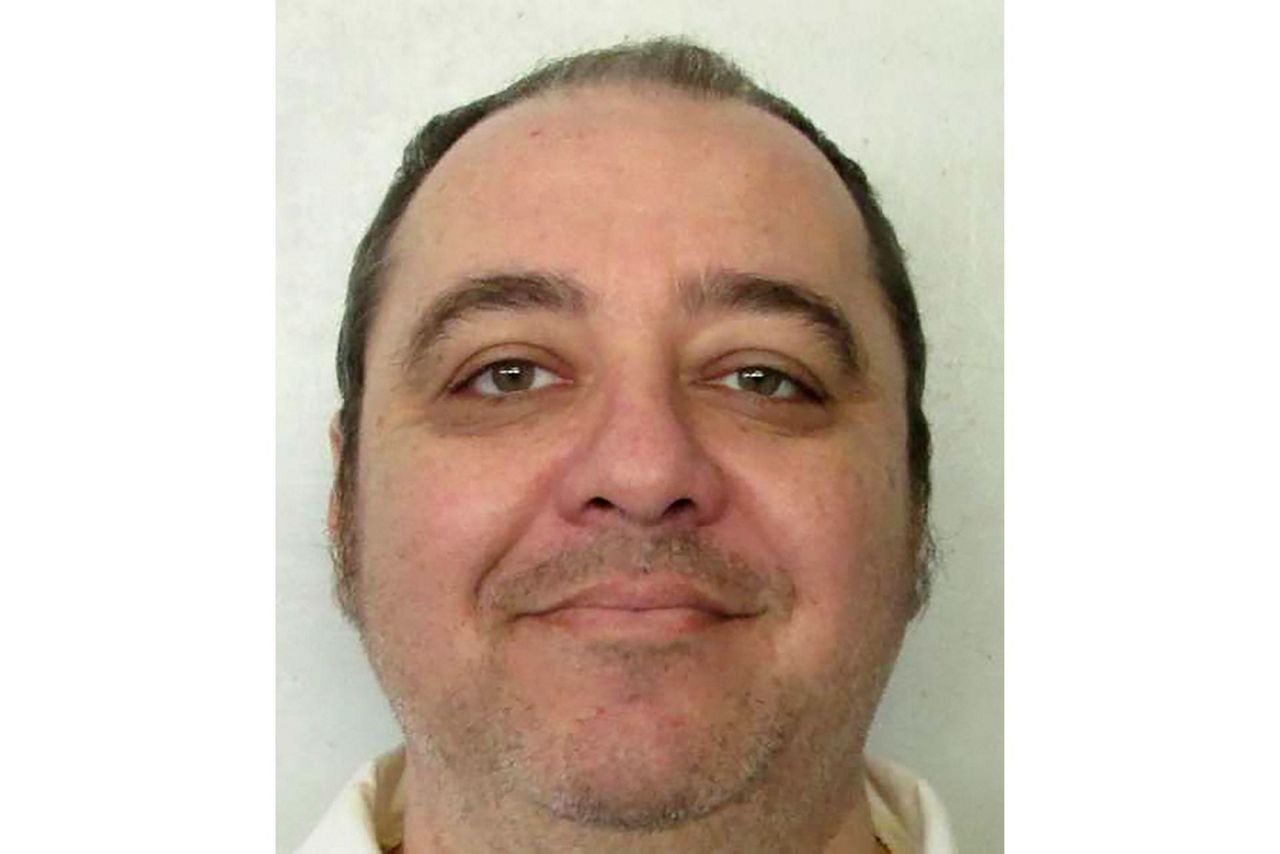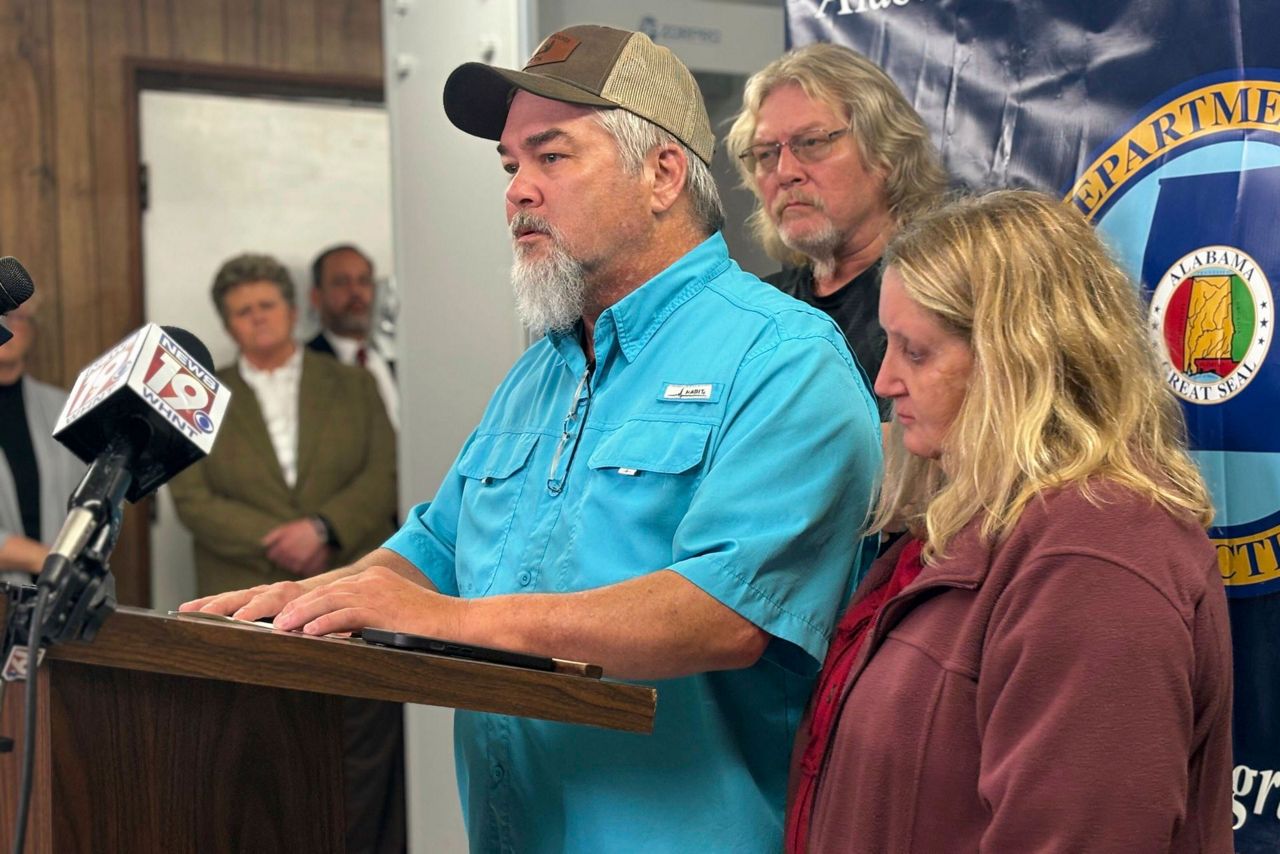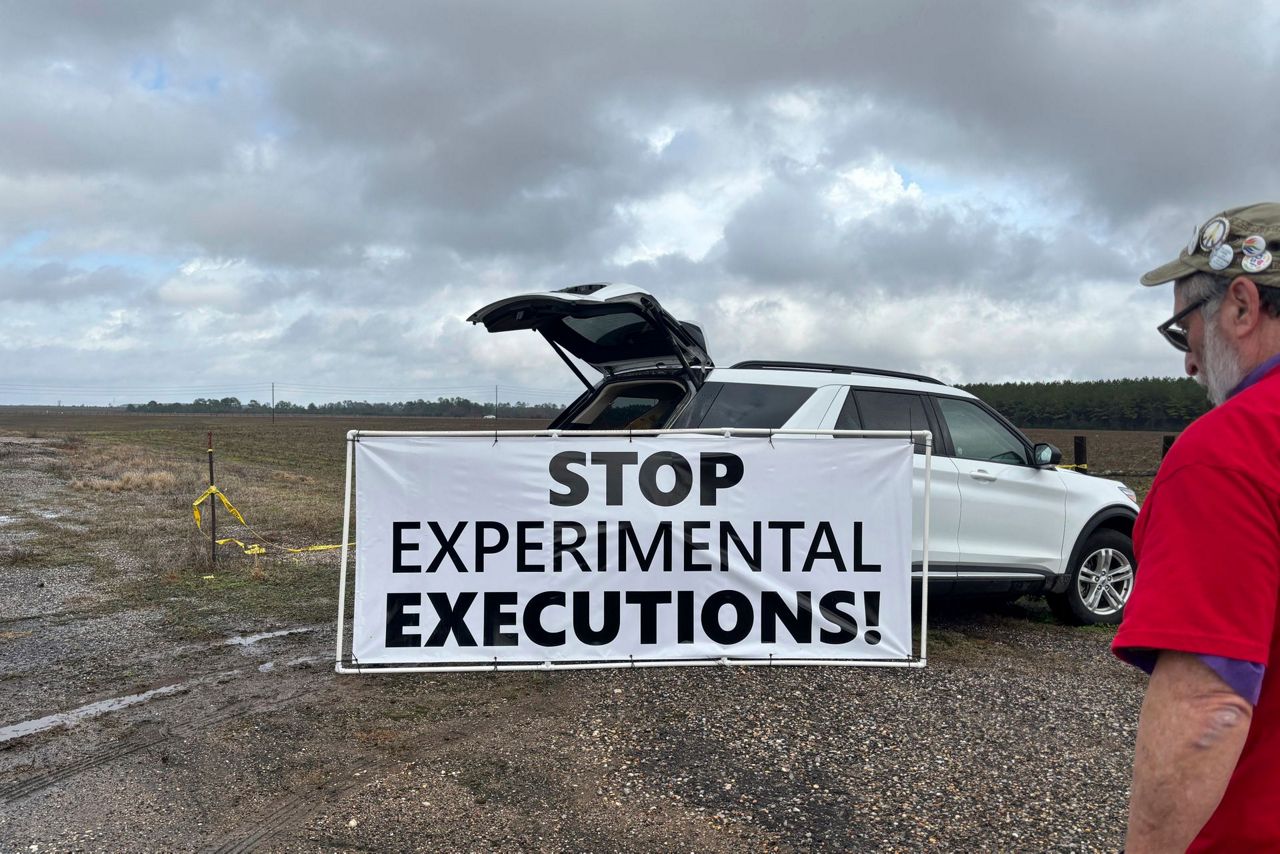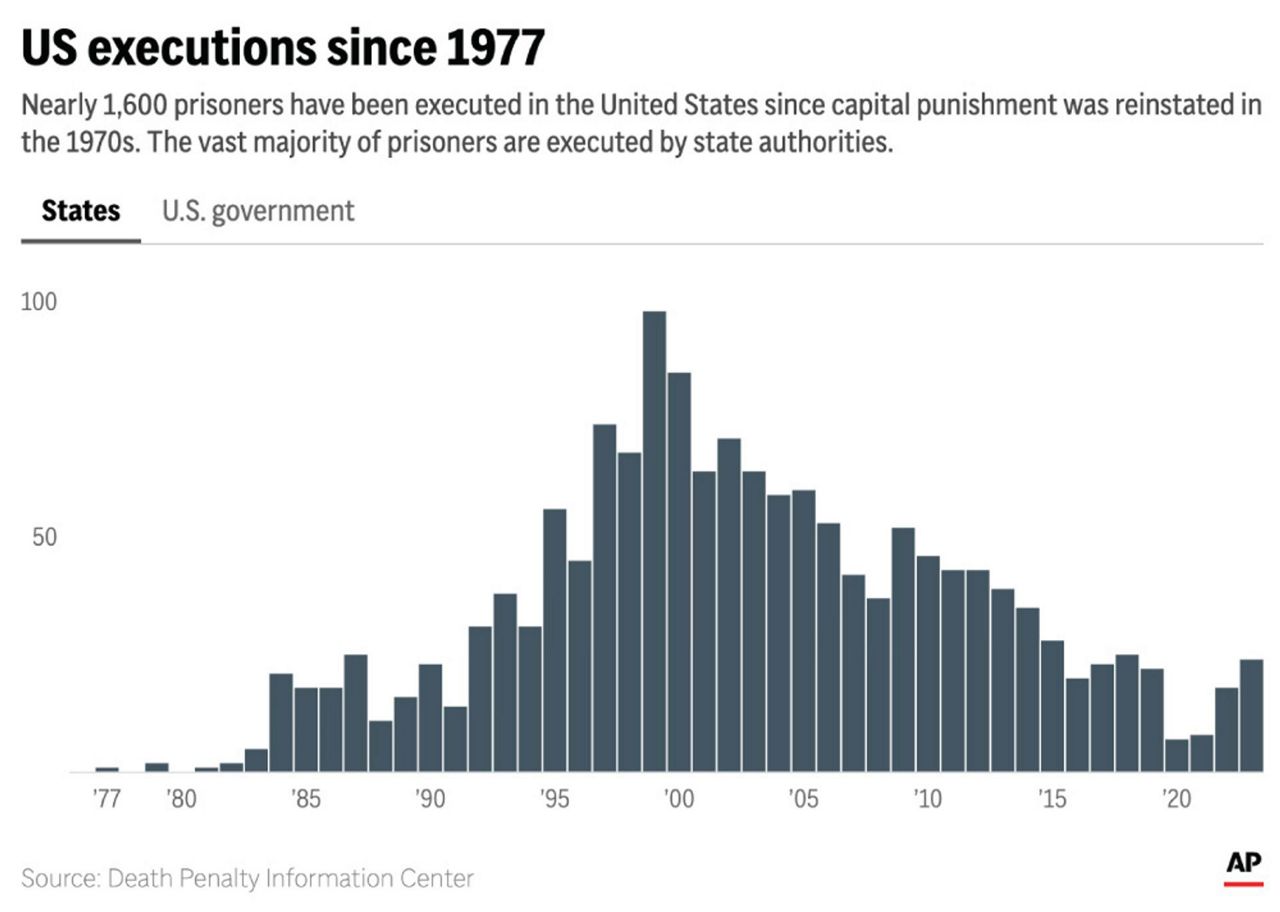ATMORE, Ala. (AP) — A man put to death using nitrogen gas shook and convulsed on the gurney as Alabama carried out the first-of-its-kind execution that once again placed the United States at the forefront of the debate over capital punishment.
Kenneth Eugene Smith, a 58-year-old convicted killer, was pronounced dead at 8:25 p.m. Thursday at an Alabama prison after breathing the gas through a face mask to cause oxygen deprivation. It marked the first time that a new execution method has been used in the United States since lethal injection, now the most commonly used method, was introduced in 1982.
The execution took about 22 minutes between the opening and closing of the curtains to the viewing room.
Smith appeared to remain conscious for several minutes after the gas started flowing. For at least two minutes, he shook violently and writhed on the gurney, sometimes pulling against the restraints and shaking the gurney with the force of his movements. That was followed by several minutes of heavy breathing, until breathing was no longer perceptible.
“Tonight Alabama causes humanity to take a step backwards,” Smith, who was paid $1,000 to kill an Alabama woman more than 30 years ago, said in a final statement. ”I’m leaving with love, peace and light.”
He made the “I love you sign” with his hands toward family members who were witnesses. “Thank you for supporting me. Love, love all of you,” Smith said.
Alabama Gov. Kay Ivey said the execution was justice for the murder-for-hire killing of 45-year-old Elizabeth Sennett in 1988.
“After more than 30 years and attempt after attempt to game the system, Mr. Smith has answered for his horrendous crimes,” Ivey said in a statement. “I pray that Elizabeth Sennett’s family can receive closure after all these years dealing with that great loss.”
Mike Sennett, the victim’s son, said Thursday night that Smith “had been incarcerated almost twice as long as I knew my mom.”
“Nothing happened here today is going to bring Mom back. It’s kind of a bittersweet day. We are not going to be jumping around, whooping and holler, hooray and all that,” he said. “I’ll end by saying Elizabeth Dorlene Sennett got her justice tonight.”
The European Union and the U.N. Human Rights Office expressed regret Friday over the execution. The 27-nation EU and the Geneva-based U.N. rights office say the death penalty violates the right to life and does not deter crime.
Alabama had previously attempted to execute Smith in 2022, but the lethal injection was called off at the last minute because authorities couldn’t connect an IV line.
The execution came after a last-minute legal battle in which his attorneys contended the state was making him the test subject for an experimental execution method that could violate the constitutional ban on cruel and unusual punishment. Federal courts rejected Smith’s bid to block it, with the final ruling coming Thursday night from the U.S. Supreme Court.
Liberal Justices Sonia Sotomayor, Elena Kagan and Ketanji Brown Jackson dissented.
“Having failed to kill Smith on its first attempt, Alabama has selected him as its ‘guinea pig’ to test a method of execution never attempted before. The world is watching,” Sotomayor wrote.
The state had predicted the nitrogen gas would cause unconsciousness within seconds and death within minutes. State Attorney General Steve Marshall said late Thursday that nitrogen gas “was intended to be — and has now proved to be — an effective and humane method of execution.”
Asked about Smith’s shaking and convulsing on the gurney, Alabama corrections Commissioner John Q. Hamm said they appeared to be involuntary movements.
“That was all expected and was in the side effects that we’ve seen or researched on nitrogen hypoxia,” Hamm said. “Nothing was out of the ordinary from what we were expecting.”
Smith’s spiritual adviser, the Rev. Jeff Hood, said the execution did not match the state attorney general’s prediction in court filings that Smith would lose consciousness in seconds followed by death within minutes.
“We didn’t see somebody go unconscious in 30 seconds. What we saw was minutes of someone struggling for their life,” said Hood, who attended the execution.
In their request for the Supreme Court to halt the execution, Smith's lawyers wrote that little research had been done on death by nitrogen hypoxia and the public has an interest in making sure the state "established procedures to minimize the pain and suffering of the condemned person.”
In her dissent, Sotomayor said Alabama has shrouded its execution protocol in secrecy, releasing only a heavily redacted version. She also said Smith should have been allowed to obtain evidence about the protocol and to proceed with his legal challenge.
“That information is important not only to Smith, who has an extra reason to fear the gurney, but to anyone the State seeks to execute after him using this novel method,” Sotomayor wrote.
“Twice now this Court has ignored Smith’s warning that Alabama will subject him to an unconstitutional risk of pain,” Sotomayor wrote. “I sincerely hope that he is not proven correct a second time.”
In his final hours, Smith met with family members and his spiritual adviser, according to a prison spokesperson.
Smith ate a last meal of T-bone steak, hash browns, toast and eggs slathered in A1 steak sauce, Hood said by telephone before the execution was carried out.
“He’s terrified at the torture that could come. But he’s also at peace. One of the things he told me is he is finally getting out,” Hood said.
The execution protocol called for Smith to be strapped to a gurney in the execution chamber — the same one where he was strapped down for several hours during the lethal injection attempt — and a “full facepiece supplied air respirator” to be placed over his face. After he had a chance to make a final statement, the warden, from another room, was to activate the nitrogen gas. It would be administered through the mask for at least 15 minutes or “five minutes following a flatline indication on the EKG, whichever is longer,” according to the state protocol.
Hamm, the corrections commissioner, confirmed afterward that the gas was flowing for about 15 minutes.
Some states are looking for new ways to execute people because the drugs used in lethal injections have become difficult to find. Three states — Alabama, Mississippi and Oklahoma — have authorized nitrogen hypoxia as an execution method, but no state had attempted to use the untested method until now.
Sennett was found dead in her home March 18, 1988, with eight stab wounds in the chest and one on each side of her neck. Smith was one of two men convicted in the killing. The other, John Forrest Parker, was executed in 2010.
Prosecutors said they were each paid $1,000 to kill Sennett on behalf of her pastor husband, who was deeply in debt and wanted to collect on insurance. The husband, Charles Sennett Sr., killed himself when the investigation focused on him as a suspect, according to court documents.
Copyright 2024 The Associated Press. All rights reserved. This material may not be published, broadcast, rewritten or redistributed without permission.



